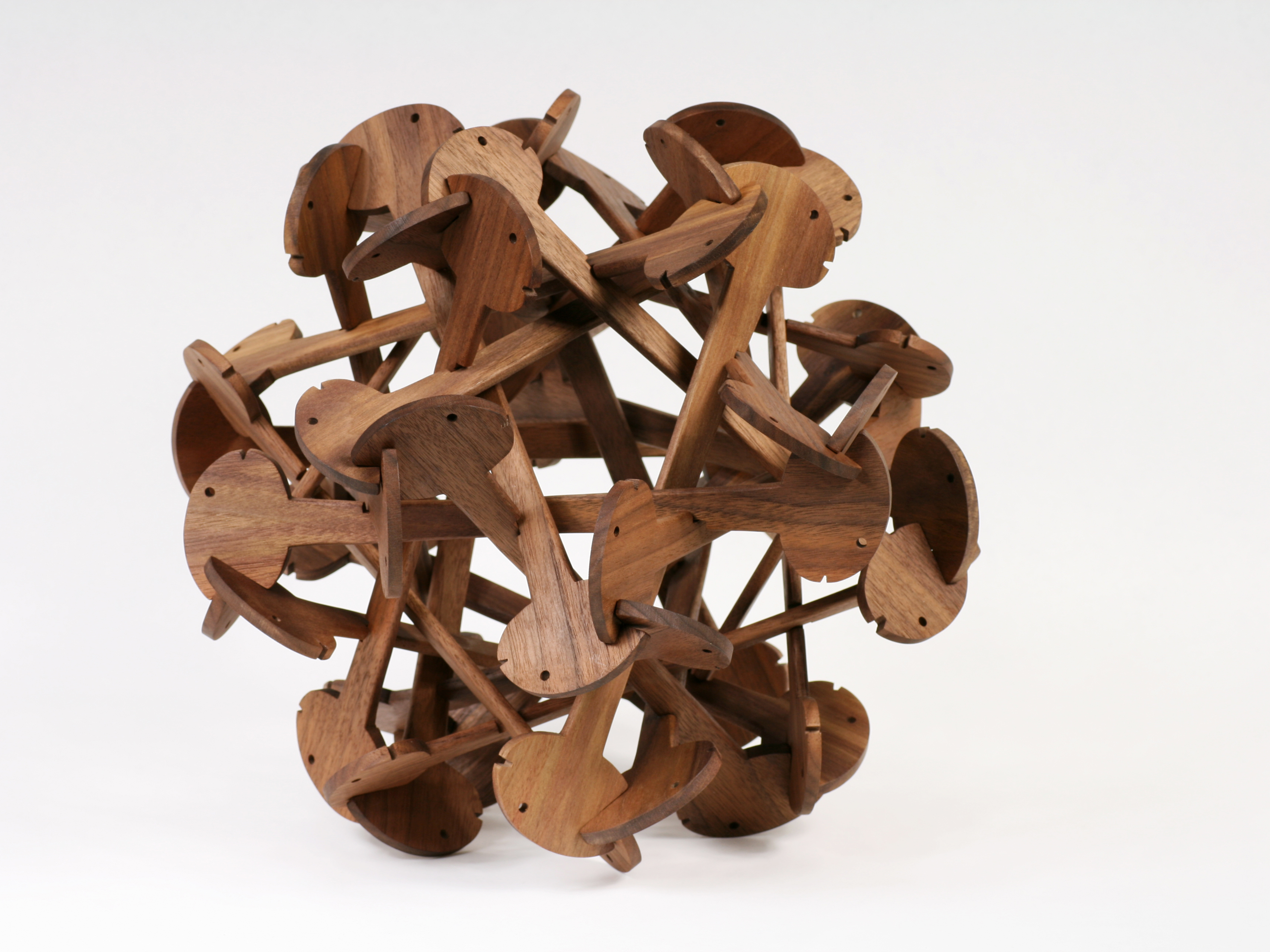As a retirement present for Joe Malkevitch, a geometer friend who likes puzzles, I designed and built this 1′-diameter Egg Heads puzzle from ¼” walnut.
Many of my sculpture and puzzle designs require laser-cutting or other computer-guided fabrication technology to accurately produce intricate parts. But this design is simple enough that you can make the parts yourself with ordinary shop tools such as a band saw and belt sander.
The ease of fabricating the parts doesn’t imply ease of assembly, however. After cutting out the 30 parts, you’ll find it requires all of your puzzle-solving skills to interweave and interlock them into a symmetric structure. Here are instructions for making and assembling your own copy.



